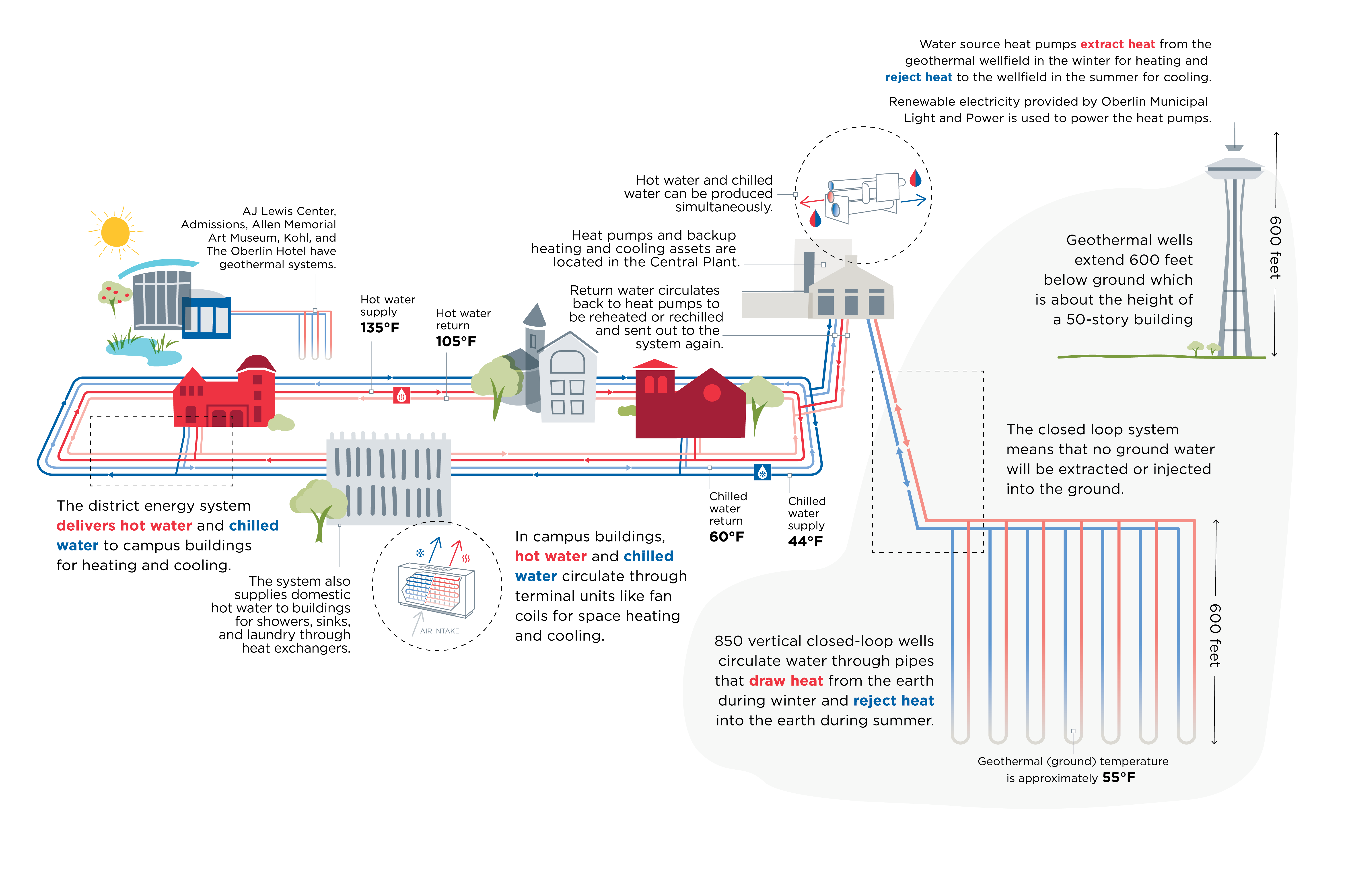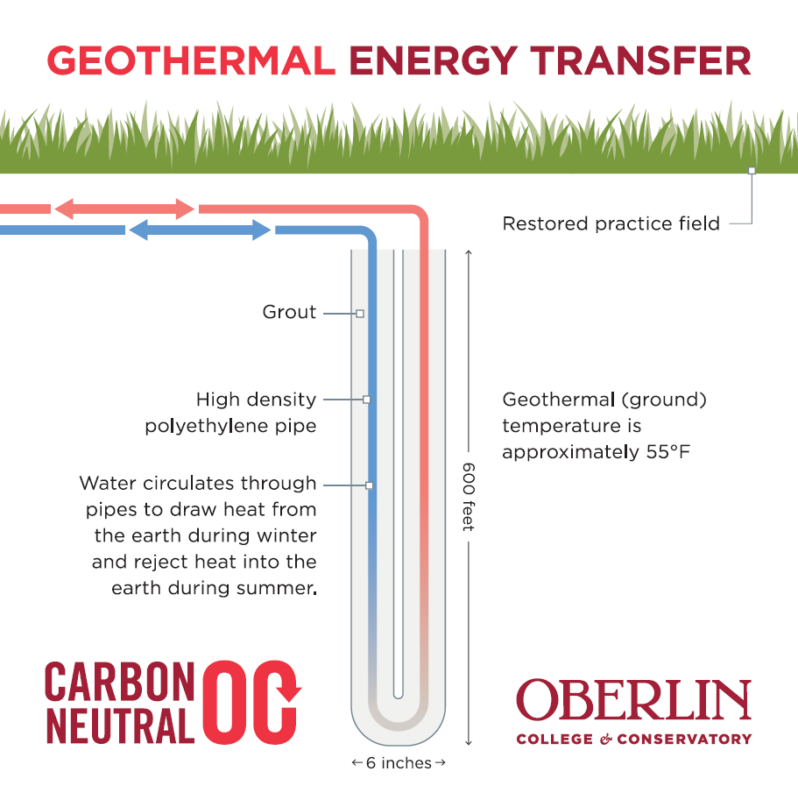About Oberlin’s Geothermal
To achieve carbon neutrality, Oberlin College completed a four-year program that included replacing fossil fuels with geothermal energy as the source of heating and cooling for campus buildings.
Installation of 850 geothermal wells 600 feet deep as the common source of heating and cooling across campus, started in May 2023. Water source heat pumps, powered by renewable electricity from Oberlin Municipal Light and Power System (OMLPS), extract heat from the wells in winter for heating and reject heat to the wells in summer for cooling.

Oberlin College Geothermal
- Vertical closed-loop wells circulate water through pipes that draw heat from the earth during winter and reject heat into the earth during summer.
- Over time, the geothermal wellfield acts as storage to provide warmer and cooler water needed for the heating and cooling systems, respectively.
- The closed loop system means that no ground water will be extracted or injected into the ground.
- The geothermal wellfield design incorporates local geology, topography, and climate conditions.
- The entire geothermal wellfield is under the North Fields.
- Adam Jospeh Lewis Center, the Hotel at Oberlin and Admissions, Art Museum, and Kohl buildings are currently served by independent geothermal heat pump systems that will remain in place.
